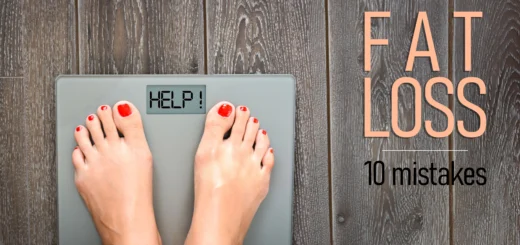30 30 30 Rule: How to Lose Weight? Explained!

30/30/30 rule, as per the experts is the best strategy for weight loss. It appears as though there is a new trick going viral now and then. Among the plethora of methods, each promises to transform your body, it becomes hard to identify what can work for you and what will not – assuming you are on a weight reduction venture.
Today we will find out whether the 30/30/30 method claiming to be the key to weight loss is worth a try. Read on for a detailed in-depth dip into the most recent weight reduction technique acquiring popularity.
Each body is unique, and the best weight reduction technique is the one that feels good for you. It includes a mix of diet, exercise, and way of life changes. Out of the diverse techniques, this approach has acquired popularity for its simplicity and effectiveness.
What is the 30/30/30 method?
This technique became a web sensation on TikTok because of Gary Brecka, a podcaste, researcher, and self-described “human biologist”. who talks about different ways of supporting physical and psychological wellness but the concept of the morning routine was originally described by Timothy Ferriss in his book “The 4-Hour Body”.
This weight reduction strategy includes eating 30 grams (g) of protein within the initial 30 minutes of waking up and following it up with 30 minutes of low-intensity exercise like walking. Beyond these steps, the technique doesn’t involve any other rules or counting calories. Doesn’t it sound interesting? Let’s find out.
.How does the 30-30-30 method work?
This technique appears to be easy enough to follow, yet how does it work? With the 30/30/30 technique, you start with consuming 30 g of protein within the initial 30 minutes that you’re awake. Carbohydrates and fats can be incorporated but ensure the main part of the meal has around 30 g of protein.
The next step is 30 minutes of exercise. It is recommended that you do steady-state cardiovascular exercise. This implies low-force cardio practices that get your heart rate up a little, but not too much. The goal is to keep your pulse at, or below 135 bpm.
Here are the advantages of having a high-protein breakfast, followed by low-intensity exercise in the morning.
Consuming protein at breakfast, trailed by low-intensity exercise in the morning has numerous medical benefits and contributes to weight loss. There is adequate scientific evidence stating that consuming more protein, particularly at breakfast, can assist decline in calorie consumption throughout the rest of the day, as protein assists you with feeling fuller for longer,”
As Josten Fish, a registered dietitian, told Health “Some studies have also shown that individuals consuming more protein get thinner faster.” Furthermore eating an adequate protein-rich breakfast can help stabilize blood sugar and combat insulin resistance. Cardiovascular activity strengthens your bones, assists you with controlling your weight, and has numerous other benefits.
Gen Coco, a women’s weight loss expert and certified nutrition coach, explains eating protein first thing in the morning balances out your glucose and insulin levels, boosts metabolism, and reduces cravings. Drinking tea, coffee, or something high in sugar and carbohydrates on an empty stomach spikes cortisol and insulin, and that leads to weight gain or inability to lose weight.
How to try it for yourself?
Break the 30/30/30 method into different steps to do it correctly.
1- 30 Gram Protein
The first portion of the 30-30-30 rule signifies having 30 grams of protein for breakfast. Protein is a fundamental supplement for weight reduction as it helps in building muscle, reduces the probability of eating later in the day, and repairs tissues.
2- 30 Minutes After Awakening
30 minutes after waking up consume a protein-rich breakfast. This will help kickstart your metabolism. High-protein breakfast choices may include yogurt, eggs, cheese, quinoa, tofu, protein shakes, milk, nuts, seeds, butter, lean meat etc. It’s entirely fine to have sugars at breakfast, however when you have a protein source alongside the starches, that glucose spike won’t be as high. To add fiber and additional nutrients include fruits and vegetables.
3- 30 Minutes of low-intensity exercise
The last part of the 30-30-30 rule is engaging in 30 minutes of exercise. You can perform moderate workouts like brisk walking, cycling, or yoga. Regular physical activity is essential for boosting overall physical and mental well-being, burning calories, and cardiovascular health.
Advantages of the 30-30-30 Rule of Weight Reduction
The idea behind the 30/30/30 technique is that it can burn muscle-to-fat ratio rather than lean muscle. A protein-rich breakfast can assist with controlling cravings and regulate glucose levels. A recent report found that the blend of additional protein and cardiovascular activity brought about lower body fat, cholesterol, etc. Let’s find out the benefits –
1. Helps Digestion
Consuming a morning meal rich in protein soon after awakening will boost metabolism. A raised metabolic rate prompts your body to burn more calories over the day, assisting in weight reduction.
2. Decreases cravings
Protein helps in regulating hunger hormones which helps in reducing cravings and stopping the urge to gorge later in the day. By starting your day with a significant portion of protein, you are less inclined to eat unhealthy.
3. Improves Muscle Mass
Protein is a crucial element for muscle repair and development. If you blend protein intake with a workout, you can boost Muscle Mass.
4- Enhances Energy Levels
Starting your day with a nutritious and protein-rich breakfast and 30 minutes of exercise you can uplift your energy levels and mental concentration.
5 – Controls Glucose Levels
Stabilization of blood sugar levels happens if you eat within 30 minutes of awakening. This prevents sugary food cravings.
6- Promotes mindful eating
By concentrating on the timing of meals there is a prompt
improvement in eating patterns.
7- Supports heart wellbeing
The 30-30-30 rule is profitable for keeping up with cardiovascular health. Regular intake of protein combined with exercise assists in reducing blood pressure, enhancing cholesterol levels, and declining the risk of heart disease.
8- Elevates weight loss maintainability
Following this rule is a decent and sensible way to deal with weight reduction. Adhering to it for a long run makes weight reduction more reachable.
Inadequacies of the 30-30-30 eating regimen plan
It could conflict with individuals’ busy routines as many people’s morning schedules include school runs and other morning chores. This means for most of them having a high-protein breakfast in the morning is unsustainable.
Another possible issue with this plan is it offers no direction on the most proficient guidance on how to eat or exercise during the rest of the day. For example, if you eat a protein-rich breakfast but consume fast food for the rest of the day you will logically won’t encounter a lot of weight reduction.
This plan probably won’t be the best methodology for people who are not early birds. They are not in that frame of mind to consume food within 30 minutes of awakening. Due to their sleep-wake cycle or circadian rhythm, the rest chemical named melatonin, is present in the initial one hour of waking. Eating too early can bring about sensations of nausea.
The good news
If you’re trying to lose weight and can follow the rules then a high-protein breakfast is a good idea that keeps you full for longer. Protein has a thermogenesis impact which means you utilize more energy to metabolize it (breaking down carbohydrates and fat).
Frequently asked questions
How does the 30-30-30 rule differ from other weight loss methods?
Unlike many eating regimen designs that highlight exclusively food limitations, the 30-30-30 rule emphasizes not just what you eat but how you supplement your eating routine with the workout. Moreover, the time and measurement of the intake of protein play an important role.
Can the 30-30-30 rule be adapted for vegetarian or vegan diets?
Indeed, the protein part of the 30-30-30 rule can be fulfilled with plant-based proteins like vegetables, tofu, etc making it versatile for veggie lovers and vegan diets.
Conclusion
30 grams of protein with 30 minutes of daily exercise makes this rule a balanced approach toward effective weight loss. The practical guideline promotes a reasonable way of life changes, diminishes the risk of chronic diseases, and underscores consistency for long-term progress in weight management.
Although it might be an economical way to deal with weight reduction,
however, that doesn’t mean it will be effective for everybody.
Disclaimer: Weight reduction includes a balanced methodology. Engagement in physical activity, mindful eating, and focused lifestyle changes. Before embarking on any weight-reduction plan consult a medical services proficient or enrolled dietitian.























